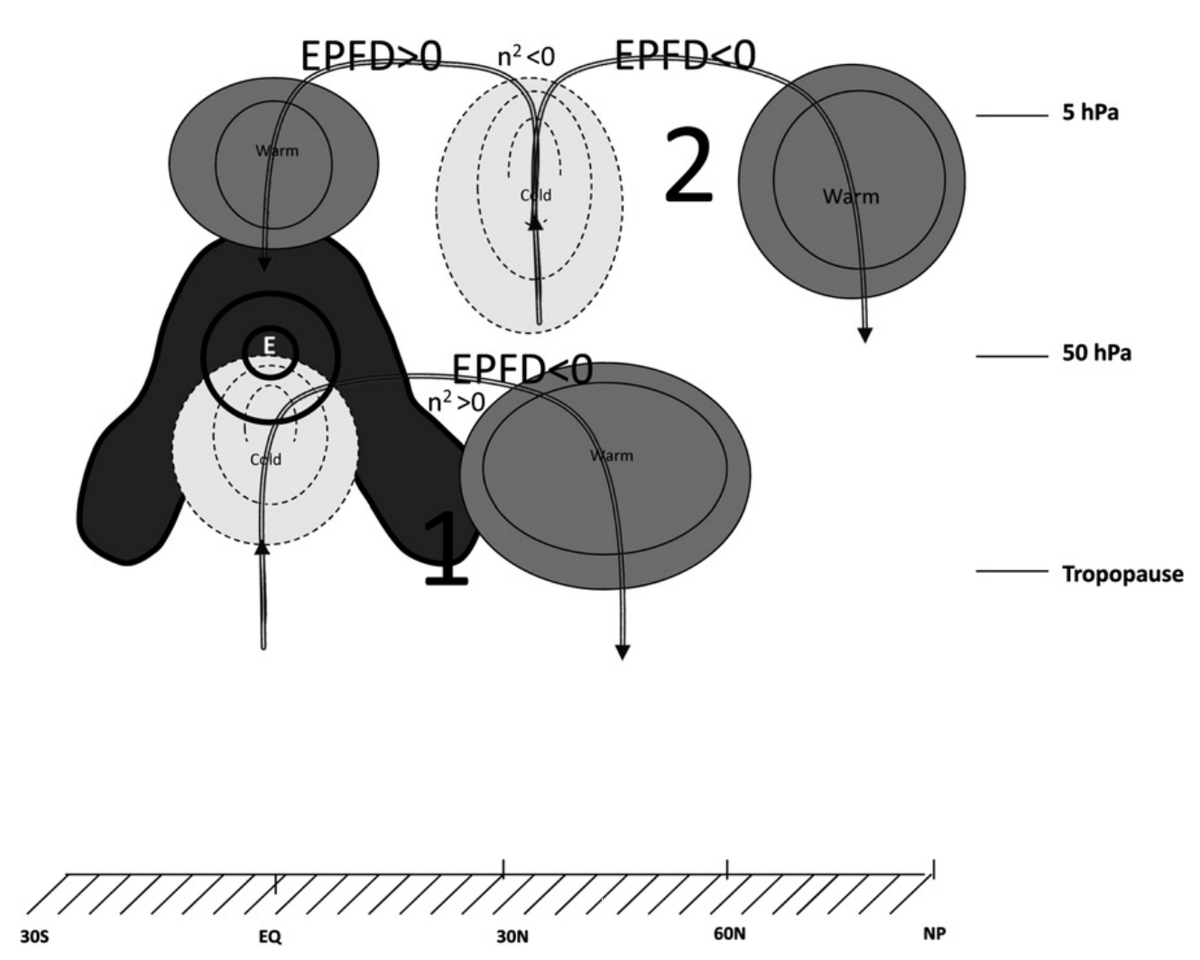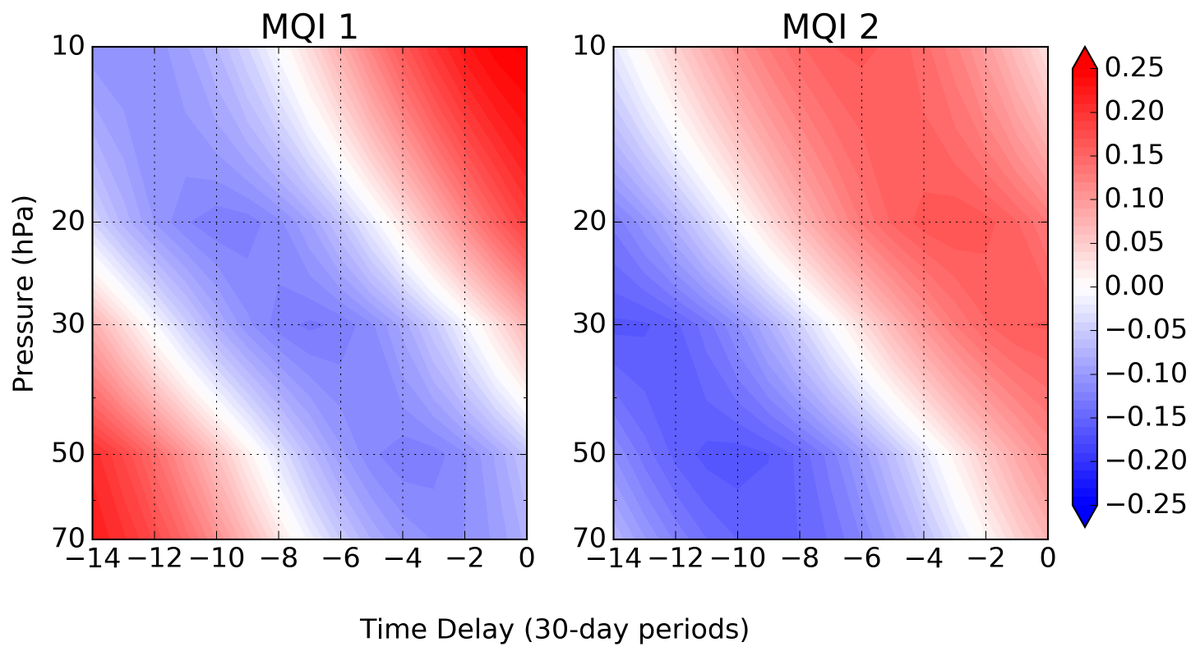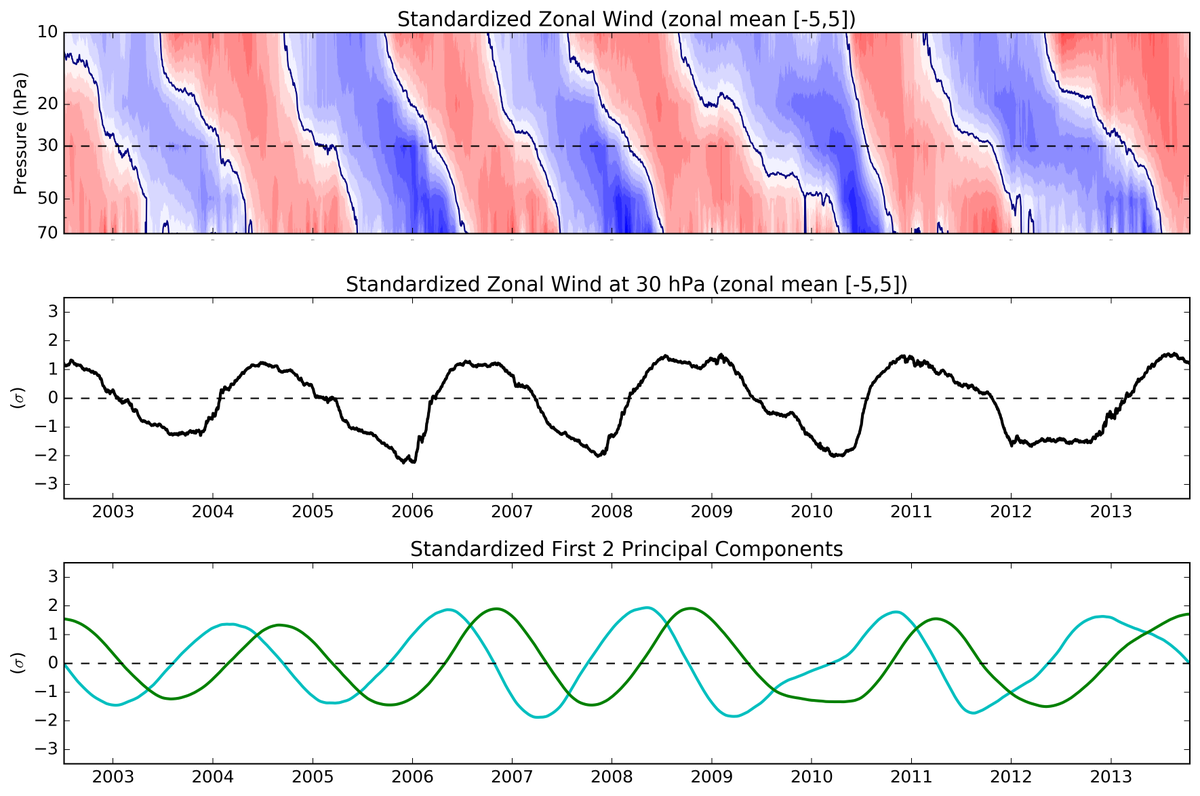THREAD -- more like a random amalgamation of thoughts, but hopefully some bits of coherence.
Thanks for the motivation @WxLiz!
Sub/seasonal (S2S) forecasting attempts to find the most probable mean state of the atmosphere formed by the aggregate of higher frequency variability..
Thanks for the motivation @WxLiz!
Sub/seasonal (S2S) forecasting attempts to find the most probable mean state of the atmosphere formed by the aggregate of higher frequency variability..
We can’t predict day-to-day weather at seasonal timescales, so instead we’re aiming to parameterize the effects of these higher frequencies.
Just like in synoptic NWP, we hope that some predictable signal exists at resolvable scales among the noise or else the exercise is futile.
Just like in synoptic NWP, we hope that some predictable signal exists at resolvable scales among the noise or else the exercise is futile.
In S2S, the signal could for example be blocking regimes which are the parameterized result of synoptic wave behavior.
Challenge is that a lot of the stuff we want to predict in the troposphere falls into the category of “internal variability” relative to seasonal time scales.
Challenge is that a lot of the stuff we want to predict in the troposphere falls into the category of “internal variability” relative to seasonal time scales.
Similar to weather NWP, we have an initial value problem with boundary forcing.
However errors saturate in the dynamical framework of weather NWP before S2S leads. We must work with time-averages, lower frequency forcing, and parameterize the synoptic scales.
However errors saturate in the dynamical framework of weather NWP before S2S leads. We must work with time-averages, lower frequency forcing, and parameterize the synoptic scales.
Initial conditions use the relevant time-mean state vector.
The boundary conditions are slow and predictable forcing that exist at the bottom & “top” of the atmosphere.
We attempt to forecast the future state either by statistical-dynamical methods or by rolling forward analogs.
The boundary conditions are slow and predictable forcing that exist at the bottom & “top” of the atmosphere.
We attempt to forecast the future state either by statistical-dynamical methods or by rolling forward analogs.
First order features of bottom & top boundary conditions are ENSO & the QBO (respectively).
The QBO is characterized by descending alternating regimes of zonal wind anomalies with greatest coherence between 10 to 70mb in the equatorial stratosphere. ( https://en.wikipedia.org/wiki/Quasi-biennial_oscillation)">https://en.wikipedia.org/wiki/Quas...
The QBO is characterized by descending alternating regimes of zonal wind anomalies with greatest coherence between 10 to 70mb in the equatorial stratosphere. ( https://en.wikipedia.org/wiki/Quasi-biennial_oscillation)">https://en.wikipedia.org/wiki/Quas...
The QBO is the most consistent known oscillation in the atmosphere (ignoring 2016), especially on seasonal to interannual timescales. So before even getting into dynamical significance, we really hope there are signals in the troposphere because it is a source of predictability.
The dynamical connections take a number of potential paths, and is still an active area of research.
Applying L’Hopital& #39;s rule to the thermal wind relationship gives us attendant temperature perturbations and meridional circulations.
(clue: vertical shear profile matters!)
Applying L’Hopital& #39;s rule to the thermal wind relationship gives us attendant temperature perturbations and meridional circulations.
(clue: vertical shear profile matters!)
The induced temp perturbations can affect the height of the tropical tropopause, influencing the location of tropical convection, etc.
And in the winter hemisphere, the meridional circulations are efficient at influencing the extratropical stratosphere. https://doi.org/10.1175/JAS-D-11-0209.1">https://doi.org/10.1175/J...
And in the winter hemisphere, the meridional circulations are efficient at influencing the extratropical stratosphere. https://doi.org/10.1175/JAS-D-11-0209.1">https://doi.org/10.1175/J...
Given the dynamical significance of the vertical shear profile, it follows that QBO measures should represent the full layer. However still the 30mb wind is most commonly referenced.
Problematic -- e.g., consider a value of 0 -- the vertical profile could be Wrly or Erly shear.
Problematic -- e.g., consider a value of 0 -- the vertical profile could be Wrly or Erly shear.
So let& #39;s get into the MQI (Multivariate QBO Index). I haven& #39;t really talked about the method on social media since days on AmericanWx 7ish years ago (wow). It is largely an update to Fraedrich (1993), using a time-extended EOF analysis. First pair accounts for >80% of variance.
The principal components from this pair of EOFs form clean orthogonal sinusoidal timeseries. Assuming the amplitude is fairly constant (cough 2016), we& #39;re left with a phase angle as the sole dimension to characterize the full vertical profile of the QBO.
The PCs can be plotted in a phase space like this, where we can visualize the CCW rotation and compare to positions on this date in past years. I made this to serve as a reference for the state of the QBO, potential analogs, and general comparisons. https://twitter.com/splillo/status/1194331101545803776">https://twitter.com/splillo/s...
One of the big challenges with analogs in this space is that the QBO and ENSO are both slow oscillations with similar frequencies. There have been 26 cycles of the QBO since 1960 which is a pretty rough sample size in combination with the annual cycle, ENSO, solar, etc.
So there are analogs which regardless of sample size can still provide some context and guidance. There are also statistical-dynamical models, which can incorporate these MQI PCs as well. This is something I may be exploring further in my current work, to be discussed more later.
Anyway that& #39;s enough of my midnight rambling.
I hope that among the noise there was some useful signal in this thread ;)
I hope that among the noise there was some useful signal in this thread ;)

 Read on Twitter
Read on Twitter






